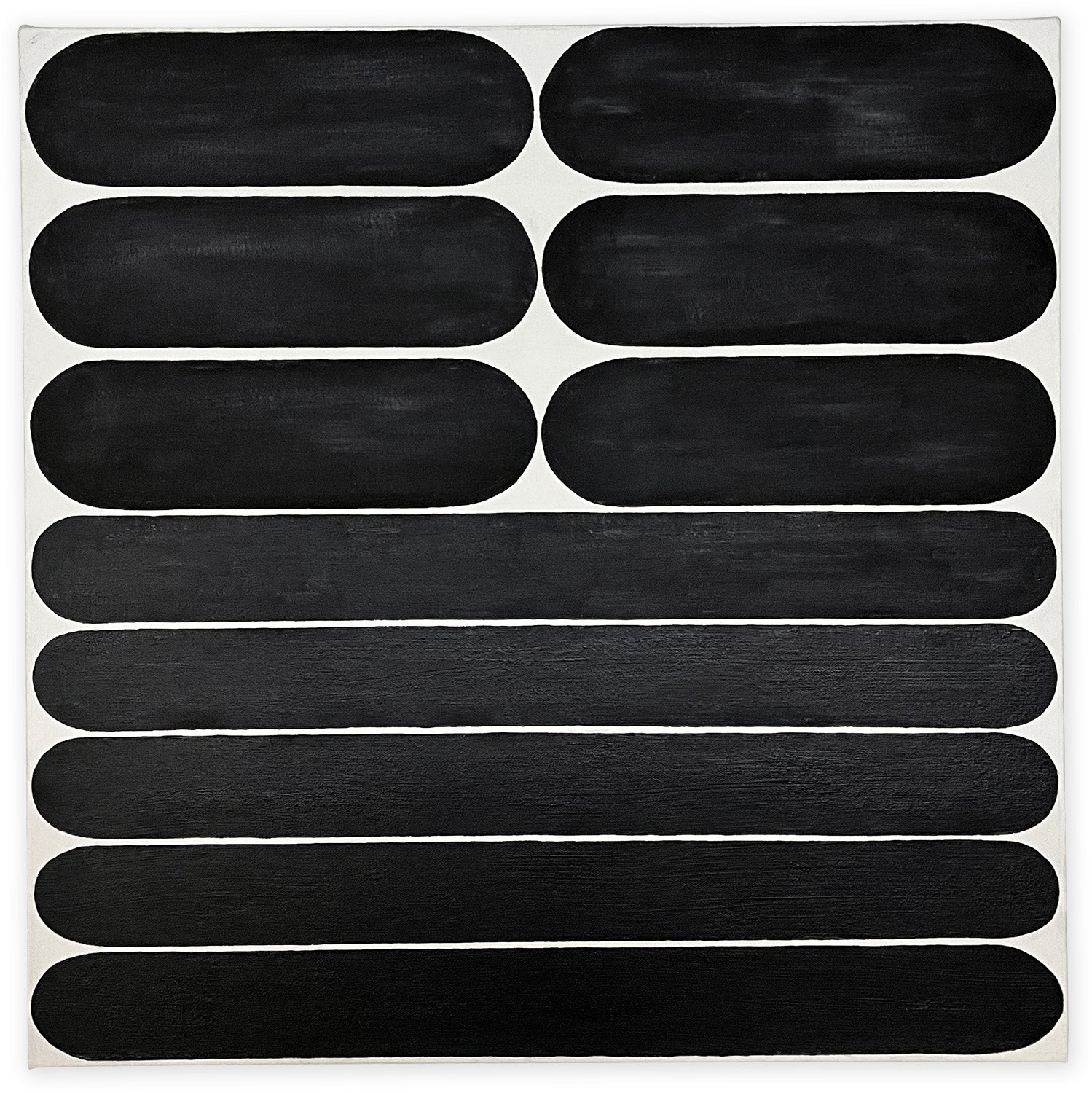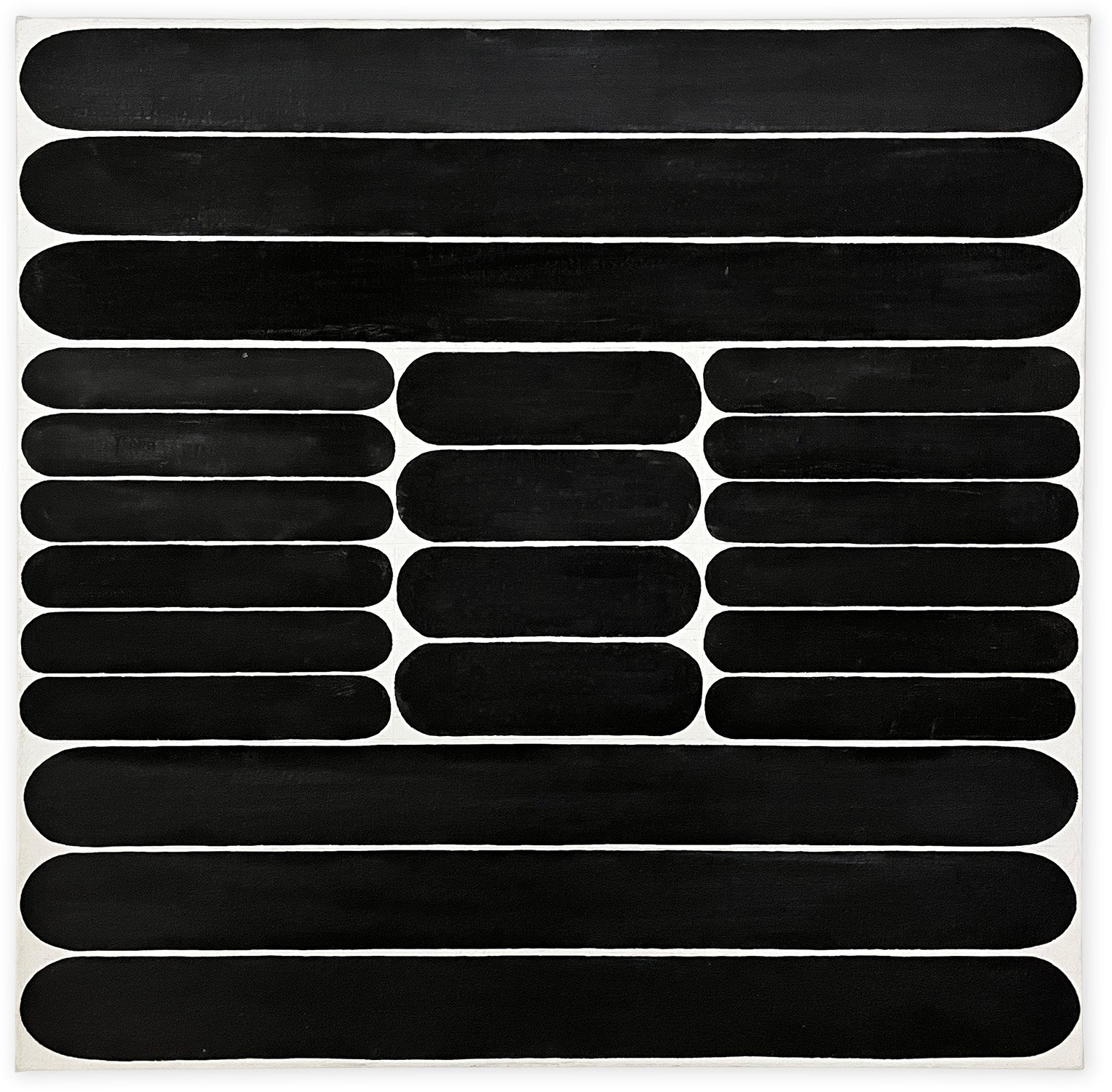Art Fair: Witek at Intersect Palm Springs (Feb 9-12)
Palm Springs Convention Center, Palm Springs
Booth #119
February 9-12, 2023
––––––––––
As an agency tasked to steward the legacy of artists, Artist Estate Studio brings an all-women presentation to Palm Springs.
This installment offers a multi-narrative rethinking of the art historical canon by exhibiting the work of five women artists including: the color-theories-made-personal in the works by Swedish-American painter Siri Berg (1921-2020); the lyrical paintings of Chinese-American painter Mimi Chen Ting (1946-2022); the bucolic abstractions of Judith Dolnick (b.1934); the fractured mosaic-like painted panels that capture ancient architecture by Hermine Ford (b.1939); the stark and strictly black and white oil-stick paintings by Joan Witek (b.1943); and the colorful tectonic mixed-media ceramics of Adirondack based sculptor Ali Della Bitta (b.1981). Grounding this selection are important prints by Joan Mitchell and Elizabeth Murray.
Of the artists presented, many have rarely, if ever, exhibited on the West Coast.
Dates and Times:
Opening Night Preview!
Thursday, February 9 | 5 - 8 pm (VIP/All Access Pass only)
General Admission:
Friday, February 10 | 11 am - 6 pm
Saturday, February 11 | 11 am - 5 pm
Sunday, February 12 | 11 am - 3 pm (10 - 11 am VIP hour)
“P-162,” 2013, oil stick and graphite on canvas, 74 x 45 x 2 in (188 x 114.3 x 5 cm)
As an agency tasked to steward the legacy of artists, #ArtistEstateStudio brings an all-women presentation to Palm Springs.
This installment offers a multi-narrative rethinking of the art historical canon by exhibiting the work of five women artists including: the color-theories-made-personal in the works by Joan Witek (b.1943)
Joan Witek has used the color black for much of her life as an artist. While appearing to be straightforward, there is a persistent language of proportion and meaning in her abstraction. “The breadth of this color from primitive to sophisticated, powerful to delicate, has left a wide area to explore,” she wrote, “The beauty of black still needs to be revealed, and I hope to continue to help that discovery along.”
In 1976, Witek set up a studio on Duane Street in Lower Manhattan where her next door neighbor was the sculptor, Richard Serra. There she began working in earnest and mostly in seclusion for some years.
During the early 1980s, she began developing composition based on the ‘mark’ of a single stroke. Her chosen medium then and now was oil stick which she applied onto the canvas nailed to her studio wall—the canvas being sized using rabbit skin glue. Blue snap lines delineated the space based on preparatory drawings. Uncomfortable with the stark contrast of the mark on raw canvas, Witek used graphite power to subdue the surface. Only after the composition was complete would the work be transferred to a stretcher.
Rising from the decades dominated by the likes of Ellsworth Kelly, Frank Stella, and Richard Serra, Witek, has adopted her own processes borrowed from a minimalistic language. By making the visual distinction between her compositional elements slight, through the course of her career Witek has produced works that deliberately avoid the formal and coloristic drama associated with much of Postwar American art.
Witek studied at the Art Students League during the 1960s. She received a BA from Hofstra University, Hempstead (1965). Major monographic exhibitions include “Joan Witek: a survey,” Museum Wilhelm Morgner, Soest, Germany (2021); “Joan Witek: Paintings from the 1980s,” Minus Space, Brooklyn (2022); “Joan Witek: Black to Black,” Gallery Niklas von Bartha, London (2002); “Joan Witek: Drawings,” Wynn Kramarsky, New York (1997); “Joan Witek: Paintings and Drawings 1970’s-1990’s,” Kendall Campus Art Gallery, Miami-Dade Community College, Miami (1993); “Joan Witek: Paintings 1980-1983, Drawings 1976-1984,” Museum of Art, Carnegie Institute, Pittsburgh (1984). Group exhibitions include Massey Klein Gallery, New York (2020); “Crossroads: Carnegie Museum of Art’s Collection, 1945 to Now,” Carnegie Museum of Art, Pittsburgh (2018); The Painting Center, New York (2016); "Between a Place and Candy: new works in pattern, repetition and motif," 1285 Avenue of the Americas Art Gallery, New York (2015); Jason McCoy Gallery, New York (2014); “Visible Places: Works on Paper by Women,” San Diego Museum of Art, San Diego (2008); Kouros Gallery, New York (2002, 2006)); “Planes of Color,” Greg Kucera Gallery, Seattle (1999); “Drawing Is Another Kind of Language,” Harvard University Museum, Cambridge (1997); "Paper Under Pressure," Ackland Art Museum, Chapel Hill (1994); “Slow Art: Painting in New York Now,” PS1, Long Island City (1992); John David Gallery, New York (1986, 1987); Rosa Esman Gallery (1984, 1985); “Women Artists from New York,” (curated by Lawrence Alloway) Art Gallery, Fine Arts Building, SUNY at Stony Brook (1978). Public collection include Albright-Knox Art Gallery, Buffalo, The Baltimore Museum of Art, Baltimore, Colby College Museum of Art, Waterville, Metropolitan Museum of Art, New York, Museum of Art, Carnegie Institute, Pittsburgh, Pennsylvania Academy of the Fine Arts, Philadelphia, Smith College Museum of Art, Northampton, University Art Museum, UCLA, Santa Barbara, and Yale University Art Gallery, New Haven, among others.
L to R: “P-149,” 2009, oil on canvas, 24 x 24 in (61 x 61 cm); “P-156,” 2011, oil on canvas, 24 x 24 in (61 x 61 cm)



